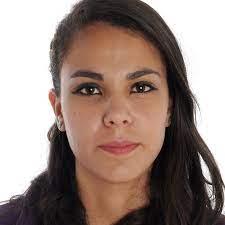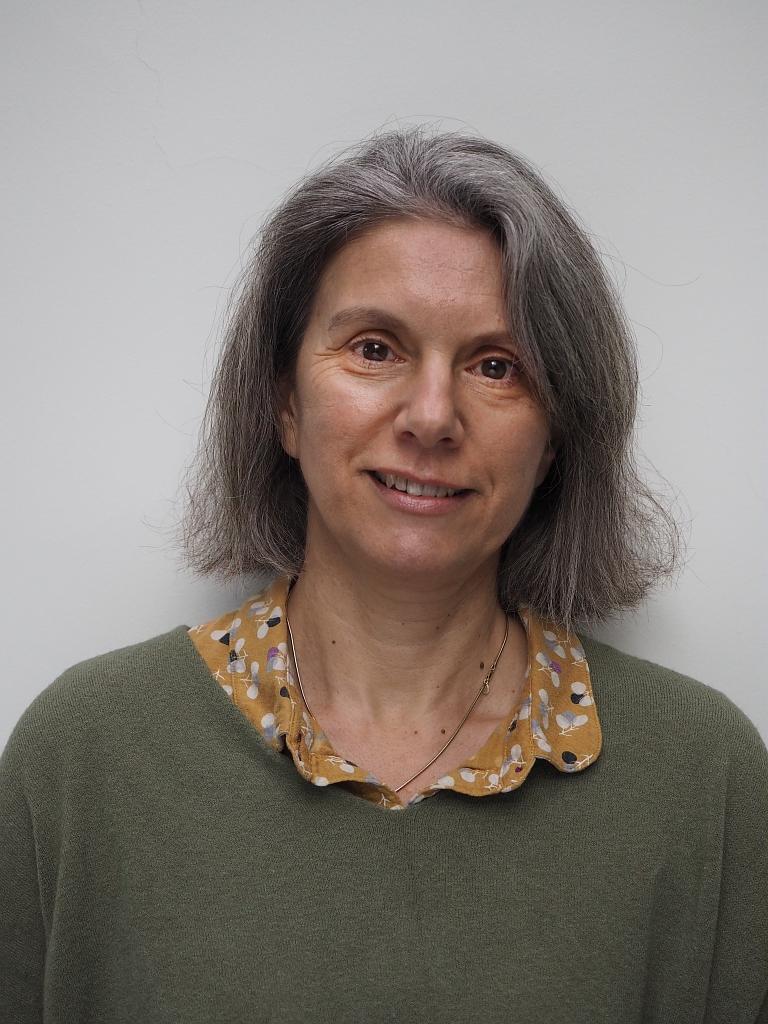To discuss about this new associate team, we spoke with Mireille Bossy, principal investigator of the CALISTO project-team from the Inria Centre at Université Côte d'Azur in France and SWAM project coordinator on the French side, and Kerlyns Martinez, researcher at the Universidad de Concepción and project coordinator on the Chilean side.
How did the formation of your partner team come about? What led you to collaborate?
Kerlyns Martínez: The SWAM associate team proposal is a product of the outstanding collaboration between the CALISTO team and researchers at the Universidad de Valparaíso, along with other collaborators in Chile. Hector Olivero and I have been frequent visitors to the Inria center at Université Côte d'Azur, in Sophia Antipolis, since 2016 and 2017, respectively. Our collaborations have been continuous since our times as PhD students and postdocs until the present. We have worked in close collaboration with Mireille Bossy on several interesting topics, especially proposing new stochastic models to describe physical phenomena in turbulent flows and computational fluid mechanics, exploring synchronization phenomena in neuroscience and tackling numerical approximation problems for a particular family of stochastic processes. In 2024, we extend this collaboration by jointly supervising an engineering student who participated in the Inria Chile internship program, and we hope to continue this dynamic in the future.
Mireille Bossy: I have known Kerlyns and Hector for several years and we have collaborated on various topics, but never the three of us together. When they both took up their positions at Universidad de Valparaíso, I was excited to see them working together, and it was Kerlyns and Hector who brought this topic to CALISTO: contributing to the understanding/modelling of marine population (larvae, algae, etc.) disturbances.
Although the task is already very robust in focusing only on population dynamics, the addition of modeling environmental flow disturbance, through the tools being developed by CALISTO, articulates well with this theme and completes the range of physical scales involved, even if the perimeter of the project becomes very broad.
What does the work you are developing in your associated team consist of?
Kerlyns Martínez: Our goal is to develop stochastic models based on physics and biology to investigate the environmental challenges posed by desalination processes at different scales. We are focusing on both near-field and far-field approaches. In the near-field context, we are studying the modeling of the plume resulting from the discharge of a desalination plant, which is a critical aspect of the plant's environmental impact. We plan to use computational fluid dynamics tools to simulate brine dispersion and understand variability factors using Eulerian-Lagrangian approaches. In the far-field approach, we aim to understand how changes in salinity and temperature levels can affect species dynamics by integrating stochasticity and uncertainty quantification into population dynamics models.

Verbatim
From the Chilean perspective, this collaboration accelerates innovation by combining expertise from diverse disciplines, including engineering, biology, physics and mathematics. The cooperation strengthens global scientific networks, enabling a better response to future challenges beyond desalination.
Researcher at Universidad de Concepción and SWAM project coordinator
Mireille Bossy: Different modeling approaches are being developed to predict the size, location and structure of areas of high salt concentration following offshore discharge. However, these are largely open problems, partly due to lack of observational and experimental data. Through our common experience in this project, we are developing/adapting stochastic approaches (we can also say statistical approaches), which have the advantage of combining with various sources of uncertainty that characterize this problem. Additionally, such methods probabilize the model response, which is an interesting feature when one wishes to evaluate a risk.
What are the advantages of working on an international scientific cooperation project with an Associate Team?
Kerlyns Martínez: In the context of the SWAM team, international scientific cooperation offers significant advantages. In Chile, desalination is a crucial issue, as some regions are currently experiencing a shortage of freshwater, which is essential for both human consumption and the mining industry. The lack of formal regulation of desalination plants could significantly impact biodiversity, also affecting other important industries such as fisheries.

Verbatim
The production of freshwater from seawater is not a technical novelty. What is new is the potential change in the scale of production. Collaborating with Chilean researchers on this topic is an opportunity to address the problem and take a forward-looking approach, which seems to be less developed in Europe at present.
Researcher at the Inria Center at Université Côte d'Azur, Inria, and coordinator of the SWAM project
What is the contribution you expect to make or the impact you expect to have at the end of this project?
Kerlyns Martínez: We hope to develop simple stochastic models that combine physics and biology to understand how desalination processes affect marine ecosystems. By focusing on brine dispersion and changes in water salinity and temperature, these basic models will lay the foundation for more advanced models that assess the risks and environmental impacts of industrial activities. We also hope that these fundamental models will inspire new students to engage in academic and industrial work and contribute real solutions to problems such as sustainable development in water-scarce regions.
Mireille Bossy: The physical and biological mechanisms and balances involved near coasts are numerous and complex, due to the different spatial and temporal scales, as well as the complexity of accounting for and simulating ocean currents and biological cycles. Therefore, I want to remain modest about the impacts that can be achieved in a three-year project. We are approaching these problems from two fronts. On the one hand, we want to perform simulations that couple a Lagrangian description of salt dispersion and induced stratification effects, over representative bathymetries of existing or planned installations. This requires numerical validation steps that can be very complicated. On the other hand, we want to develop stochastic models of biological populations, in particular, for the study of the effects of salinity fluctuations.
How does the work between the French and Chilean teams complement each other?
Kerlyns Martínez: Both the Chilean and French teams work together effectively to enrich the SWAM project. From Universidad de Concepción, Universidad de Valparaíso and Universidad Católica de Chile, we can bring expertise in coastal hazard modeling, climate-driven impacts and marine ecology, which is crucial to evaluate experiments and analyze data, such as bathymetry and identification of species that could be affected by changes in salinity and temperature near the Chilean coast. On the other hand, from the Calisto team, we have experts in the physics of complex flows and computational fluid dynamics, which are essential to propose adequate models. In addition, they lead in stochastic modeling and numerical analysis, helping us to provide robust predictive models.
Mireille Bossy: The project is based on complementary expertise (in stochastic modeling, physics and biology), but also on complementary simulation tools: direct simulation, which is more fundamental and helps to develop the models, and computational fluid dynamics simulation, which seeks to meet more engineering-oriented needs. It is also a contribution of experimental tools, with the facilities already operational in Valparaiso.
What does it mean to you to have been selected in INRIA's associate team program?
Kerlyns Martínez: This is a great opportunity. It means that our research is relevant and can have an impact on important environmental problems. This program gives us the opportunity to collaborate even more closely and use our combined knowledge in different areas. For me, it is an honor to be part of a program that fosters collaboration between scientists around the world, helping us to expand our connections, inspire more students and support research.
What is an Associate Team?
An associate team is a joint research project between an Inria project-team and a research team abroad. For 3 years, the partners jointly define a scientific objective, a research plan, and a bilateral exchange program.
Since Inria arrived in Chile in 2012, 33 Franco-Chilean research projects from different areas of digital sciences have been funded by Inria within the framework of this program..
Currently, nine Associate Teams are working, in which researchers from Inria centers in France collaborate, such as the Inria Centre at the University of Bordeaux, Inria Centre at the University of Lille, Inria Centre at Université de Lorraine, Inria Paris Centre, Inria Centre at Rennes University, Inria Branch at the University of Montpellier, Inria Centre at Université Côte d'Azur; and Chilean institutions, such as the Universidad de Chile, the Pontificia Universidad Católica de Chile, the Universidad de Valparaíso, the Universidad Técnica Federico Santa María, the Universidad Austral, the Universidad de Santiago, the Universidad Adolfo Ibáñez and the Universidad de O’Higgins.
